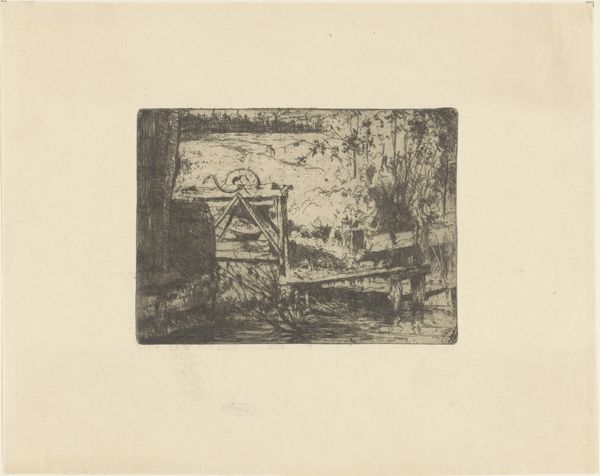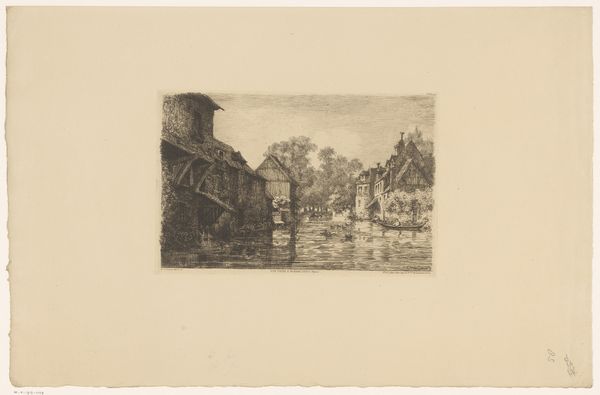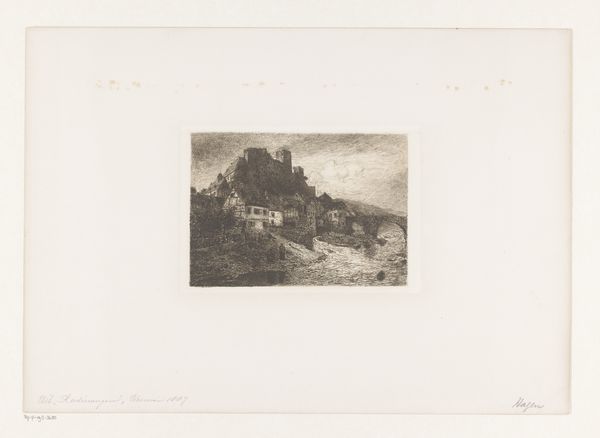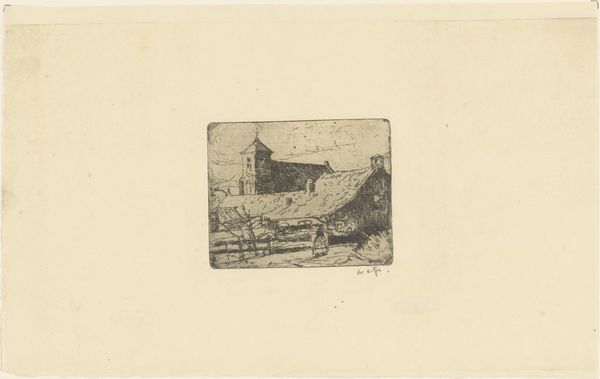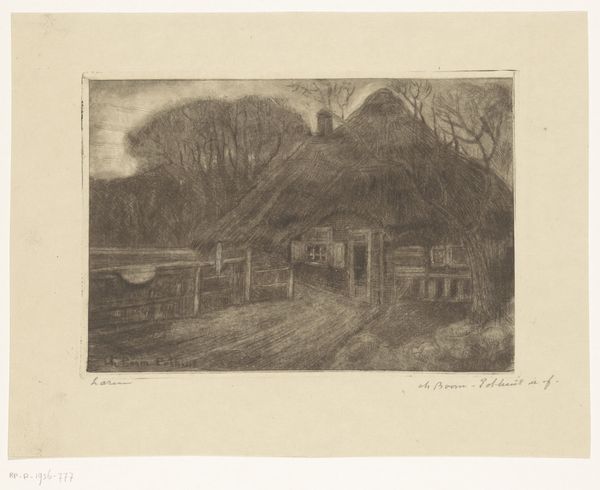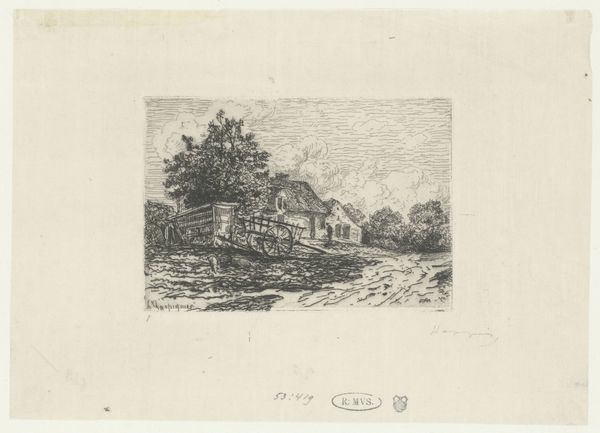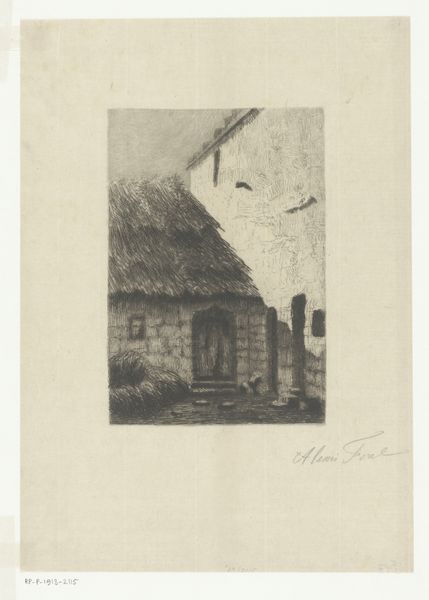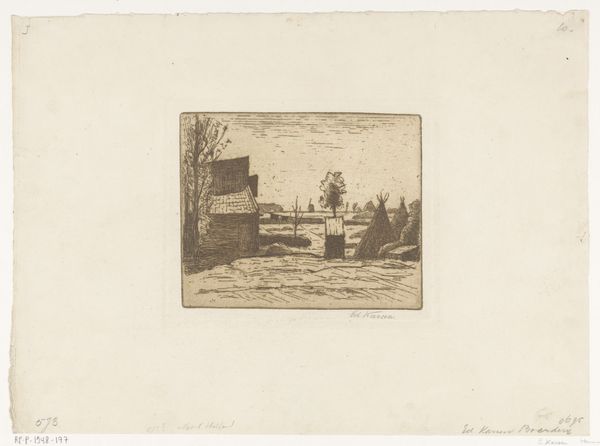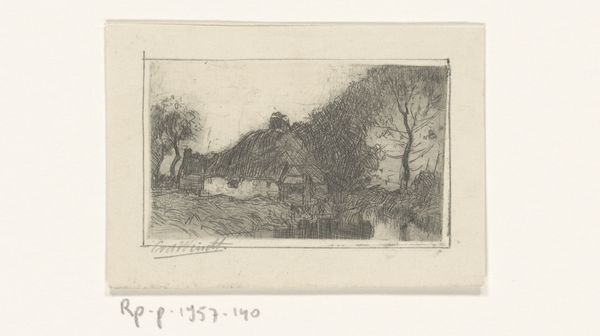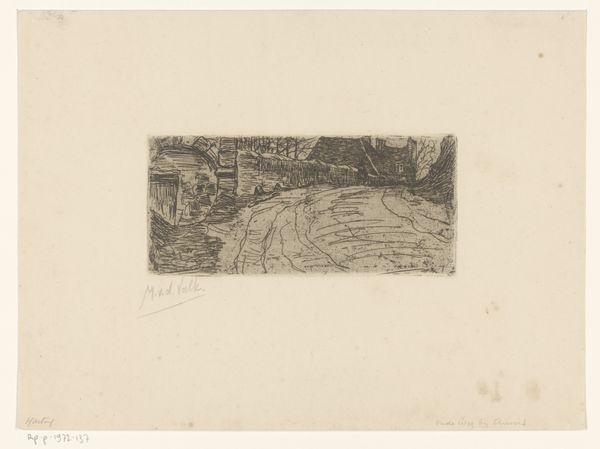
print, etching
#
dutch-golden-age
# print
#
etching
#
landscape
#
road
#
watercolour illustration
#
monochrome
Dimensions: height 150 mm, width 252 mm
Copyright: Rijks Museum: Open Domain
Editor: This is "Boerenhutten aan een landweg," or "Farmhouses on a Country Road," by Johannes Vogelaar, dating somewhere between 1880 and 1935. It's an etching, so a print. The detail is amazing. It's a simple scene, but so evocative of rural life. What do you see in this piece? Curator: I'm immediately drawn to the artist's choice of etching, a medium that democratizes image production. Consider the labour involved: the careful scoring of the plate, the acid bath, the physical act of printing. How does this laborious, reproducible process connect to the subject matter— these modest farmhouses? Is it an attempt to elevate the everyday labour of rural life? Editor: That's a fascinating point. I hadn't thought about the connection between the process and the subject itself. The detail almost seems at odds with the simplicity of the subject matter. Curator: Exactly! Vogelaar’s work raises questions about the art market, too. Prints made art accessible but also relied on its commodification. Look at the composition - does the rough texture created by the etching reflect a social commentary, showing us not a pristine landscape but one born from and embedded within physical effort? Editor: So you're suggesting it’s less about idealizing the rural landscape and more about acknowledging the labor that shapes it? Curator: Precisely! And considering the time period, we must acknowledge burgeoning industrialization; the etching hints at the social and economic contrasts that landscape painting frequently ignored. What is deliberately included? What has the artist chosen to omit from the composition? Editor: I see what you mean. Looking at it through the lens of production and consumption changes everything. I initially saw a quaint rural scene, but now I'm thinking about the artist’s hand, the materials involved, and the broader social context. Thanks! Curator: Indeed. The image then isn't just about the subject; it’s about the means of its representation and the material conditions from which it springs, challenging the perceived separation between "high art" and everyday craft.
Comments
No comments
Be the first to comment and join the conversation on the ultimate creative platform.
